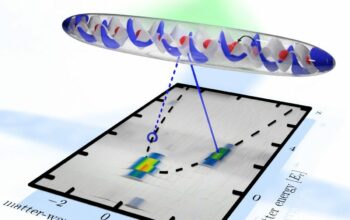In the rapidly evolving realm of telecommunications, the role of a Fiber Optic Technician emerges as a pivotal force, often referred to as the “light whisperers” of modern connectivity. But what does it truly mean to be a fiber optic technician? And, more provocatively, how can one navigate the labyrinth of intricate optics, materials, and the nuanced science of light transmission while adhering to the strict demands of industry standards? This article delves into the multifaceted responsibilities, requisite skills, and the contextual importance of fiber optic technicians in today’s technologically saturated milieu.
The core responsibility of a Fiber Optic Technician is the installation, repair, and maintenance of fiber optic networks. These networks serve as the backbone for high-speed internet, quality television broadcasting, and a plethora of advanced communication technologies. As society becomes increasingly reliant on seamless connectivity, the demand for technicians who can deftly manage the delicate and sophisticated infrastructure of fiber optics grows exponentially.
The journey to become a Fiber Optic Technician is typically marked by a combination of technical training and hands-on experience. Vocational schools and community colleges offer dedicated programs, culminating in certifications that validate one’s proficiency with fiber optic systems. Coursework often spans subjects such as optical fiber theory, network design, splicing techniques, and troubleshooting methodologies. Such preparatory education not only equips aspiring technicians with foundational knowledge but also imbues them with critical thinking capabilities essential for complex problem-solving tasks.
One might ponder: How does one ensure precision in an industry where a minute error could disrupt communications for an entire region? The answer lies in meticulous attention to detail and a comprehensive understanding of the properties of light. At the heart of fiber optic technology is the principle of total internal reflection, enabling light to be transmitted through strands of glass or plastic fibers, sometimes over vast distances. Thus, a technician must be well-versed in the behavior of light and its interaction with various media, requiring a robust grasp of physics and optics.
In addition to theoretical knowledge, hands-on skills are paramount. Fiber optic technicians must adeptly perform splicing, a task that requires not only precision but also a steady hand and keen eye. The splicing process involves joining two optical fibers together, which can be accomplished using various techniques, such as fusion splicing or mechanical splicing. Each method presents its own challenges, necessitating proficiency with specialized tools like cleavers and splicing machines. Moreover, the ability to work under pressure and adapt to unforeseen challenges is a vital trait, as technicians often find themselves troubleshooting emergent issues in the field.
Moreover, the modern Fiber Optic Technician must exhibit a broad array of competencies extending beyond mere technical expertise. Communication skills are indispensable, particularly when collaborating with other professionals or interfacing with clients. A technician’s ability to articulate technical concepts in an accessible manner can foster client relations and facilitate smoother project execution. As connectivity needs evolve, fiber optic technicians must also remain abreast of technological trends, demonstrating an aptitude for lifelong learning and professional development. This adaptability ensures that technicians can implement cutting-edge solutions and innovate within their field.
Environmental considerations also weigh heavily on the role of a Fiber Optic Technician. In an age characterized by an increasing awareness of ecological impacts, technicians are encouraged to embrace sustainable practices. This aspect involves selecting appropriate materials and methods that minimize waste and reduce the carbon footprint associated with installation processes. The dual role of enhancing connectivity while promoting environmental stewardship presents a unique challenge and opportunity for technicians to be proactive agents of change.
As the domain of fiber optics continues to burgeon, a myriad of career pathways unfolds for adept technicians. Opportunities abound in various sectors, including telecommunications, defense, healthcare, and even local government initiatives aimed at expanding broadband access. Technicians can also pursue specialization in project management or technical training, potentially ascending to supervisory roles where they can influence policy and procedural development within organizations.
Despite the numerous benefits and advancements fiber optic technology affords, it is imperative to acknowledge the challenges that pervade this field. The rapid pace of technological evolution necessitates constant adaptation and re-education. Moreover, technicians must navigate complex logistical considerations in deploying fiber optic networks, as installations may involve navigating tight spaces, adverse weather conditions, or remote locations. These challenges underscore the need for resilience, ingenuity, and a profound commitment to overcoming obstacles.
In conclusion, the role of a Fiber Optic Technician is emblematic of the intersection between art and science, underscoring a mastery of light as both a phenomenon and an essential utility. The road to becoming a skilled technician is rife with hurdles, yet it offers ample rewards in contributing to the fabric of modern communication. As we advance deeper into the digital age, the technicians who manipulate light to forge connections will play an indelible role in shaping the future of our interconnected world. Perhaps, as we ponder the role of fiber optic technicians, we might ask ourselves: Are we ready to embrace the light? The call for skilled light whisperers has never been more urgent.










